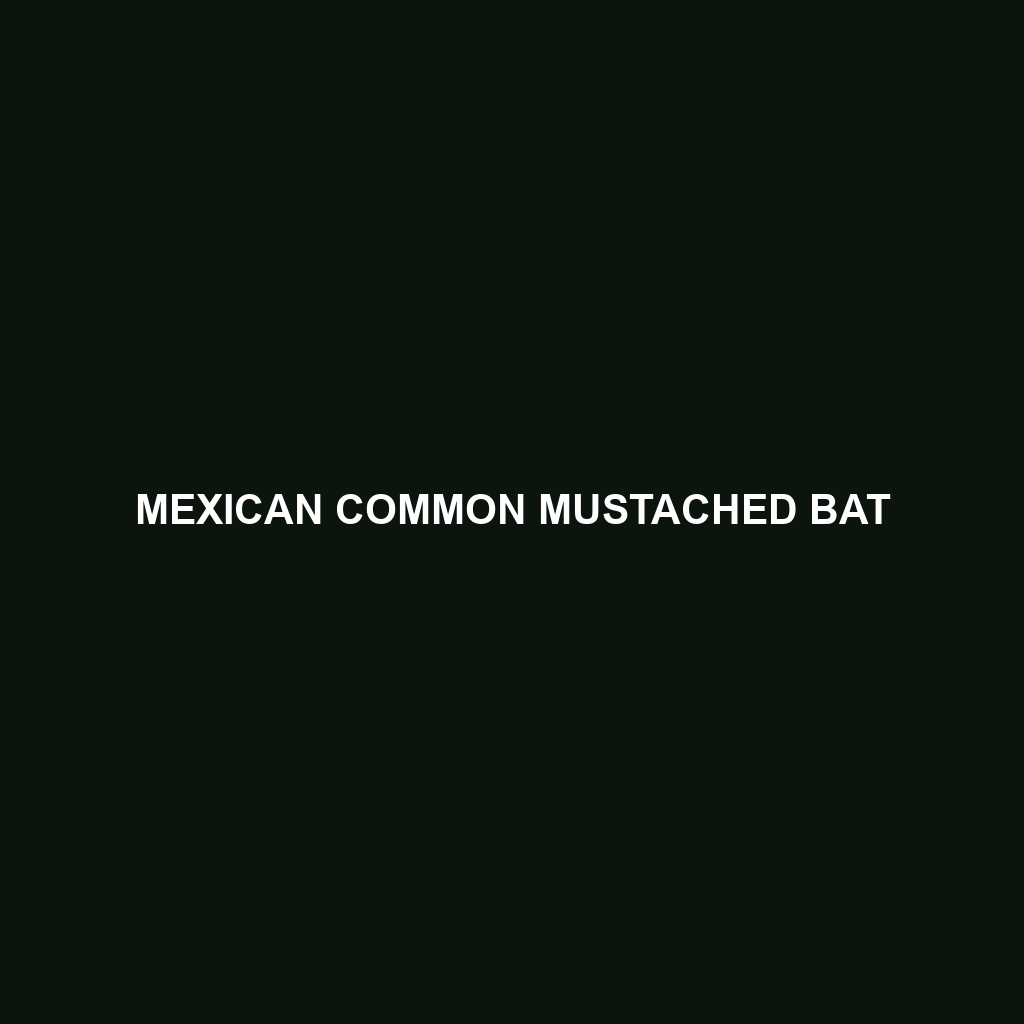Mesoamerican Common Mustached Bat
Common Name: Mesoamerican Common Mustached Bat
Scientific Name:
Habitat
The Mesoamerican Common Mustached Bat is primarily found in the tropical and subtropical regions of Central America, particularly in countries such as Mexico, Belize, Guatemala, Honduras, and Nicaragua. This species typically inhabits rainforest ecosystems, preferring wooded areas near water sources where it can roost in caves, tree hollows, and buildings. Its presence in these habitats underscores the importance of maintaining healthy wetland and forest environments for its survival.
Physical Characteristics
This bat species is characterized by a medium size, with a wingspan measuring approximately 30-35 cm. The Mesoamerican Common Mustached Bat exhibits a distinct fur coloration, ranging from a light brown to a darker shade on the back, while the underbelly remains paler. One of its most distinguishing features is its prominent mustache-like facial hair, which sets it apart from other bat species, and its elongated ears that assist in echolocation, making it an adept aerial predator.
Behavior
Mesoamerican Common Mustached Bats are nocturnal creatures, displaying typical behaviors such as foraging for food at dusk. They are known for their agile flight capabilities and often forage in groups, which not only aids in efficiently locating food but also serves as a social interaction time. Their echolocation skills are highly developed, allowing them to navigate through dense foliage and catch prey mid-flight.
Diet
This bat primarily feeds on a variety of insects, including moths, beetles, and other nocturnal flying insects. The Mesoamerican Common Mustached Bat plays a crucial role in pest control, consuming a significant quantity of insects each night. This insectivorous diet contributes to the ecological balance by regulating insect populations and maintaining the health of its habitat.
Reproduction
Reproductive activity in Mesoamerican Common Mustached Bats typically occurs during the warmer months, with a breeding season that peaks between April and July. Females give birth to one or two pups per season after a gestation period of about 60-70 days. The young bats are nursed for several weeks before they begin to fly and forage independently, showcasing an intriguing maternal bond and collective care within roosting communities.
Conservation Status
Currently, the Mesoamerican Common Mustached Bat is listed as vulnerable by conservation authorities due to habitat loss, deforestation, and the effects of climate change. Ongoing efforts are critical to protect this species and its natural habitats to prevent further decline.
Interesting Facts
One fascinating aspect of the Mesoamerican Common Mustached Bat is its unique roosting behavior; these bats are known to roost in large colonies, often numbering in the hundreds, which can create significant guano deposits that benefit the local ecosystem. Additionally, due to their distinct facial hair, they are often referred to in local folklore, believed by some to represent good luck and prosperity.
Role in Ecosystem
The Mesoamerican Common Mustached Bat plays an essential role in the ecosystem as a natural pest controller, which contributes to the overall health of its environment. By preying on insects, they reduce the need for chemical pest control methods that can harm other wildlife. This species also serves as a food source for predators like hawks and snakes, creating a balanced food web within its habitat.
